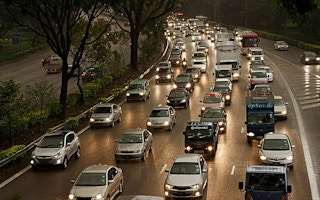What would help persuade drivers to give up their cars for cleaner transport alternatives? A recent survey of drivers in 23 cities across 15 countries offers some clues.
The survey was conducted by the US-based research and consulting firm Conduent, which specialises in public transportation and urban mobility. The firm recently revealed its findings in a report called “The customer experience of urban travel.”
The report underscores the difficulty of weaning people who can afford to own cars away from them. Despite traffic snarls and the expense of ownership and maintenance, people prioritise cars for the comfort and speed they offer. In the developing world, a car is a status symbol many aspire to attain.
Respondents indicate that they would use public transport more if they knew it was reliable. They also expect quick access to regularly updated schedules and routes.
“Travelers want a seamless experience, whether it’s the train, bus or a ride-hailing service,” the report says. “For this to happen, attitudes will need to shift, with public transportation providers partnering with private providers rather than seeing them as competition.”
There are several steps cities can take to improve transit networks without having to incur the major costs of massive infrastructure projects, the report says. Key recommendations include:
- Changing public behaviour: Apps that make it easy to arrange a ride or pinpoint when the next bus or train will arrive can facilitate new travel habits. Outreach campaigns to educate residents about the pluses of public transit can also help.
- Boosting existing transit capacity: Cities can expand the service they already provide by offering operators incentives to improve.
- Harnessing “Big Data”: Analytics should be used more actively to assess what is and isn’t working and where transit service should be launched, increased or scaled back.
The stakes couldn’t be higher. Urban mobility is about much more than transportation — there are serious economic consequences. It is a “key differentiator for competitiveness,” the authors emphasise. Cities with efficient transit networks attract the most investment, which in turn strengthens economies.
Conversely, gridlock comes with a price tag: higher fuel costs, slower delivery times, missed meetings and fewer sales and business development opportunities.
The report highlights four cities that are policy innovators:
- Singapore, with its “car-light” approach: Drivers in Singapore must bid on certificates that only let them use their vehicles for ten years. The city-state also boasts a world-class metro system and electronic tolls that rise when motorists use roads during peak periods.
- Copenhagen and Amsterdam, with their focus on bicycling: Ample investments in bike lanes have fostered a bicycle culture in these European cities. More bicyclists enter Copenhagen each day than cars. The Netherlands has 35,000 km (22,000 miles) of cycling lanes.
- Paris, with its drastic measures to cut driving: When air pollution peaks in the French capital, Mayor Anne Hidalgo relies on what the authors describe as a “carrot-and-stick approach.” The stick is car restrictions: Vehicles with even- and odd-numbered license plates are only allowed to use the roads on alternate days. The carrot: Metro and bus fares are suspended.
A common frustration among commuters is that public-transit options often take longer than they anticipate, the report says. Cities can address this concern by providing real-time arrival and departure information — often via apps and websites — to help riders plan ahead.
Drivers are also sensitive to price signals, the authors note. In Los Angeles, for example, charging more for the most in-demand parking spots has encouraged drivers to use other underutilised parking capacity. Similarly, Indianapolis lengthened the amount of time drivers could park at underused spaces, freeing up spots in the city centre.
The survey was conducted with people age 18 to 65. While more than half of the cities represented were in North America or Europe, the survey also included respondents from Kuala Lumpur, Lima, Mexico City, Santiago Singapore and Sydney.
To request a copy of the Conduent report, click here.
This story was published with permission from Citiscope, a nonprofit news outlet that covers innovations in cities around the world. More at Citiscope.org.










